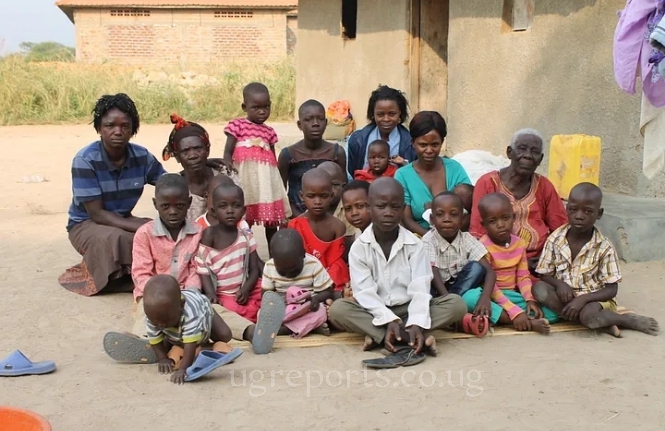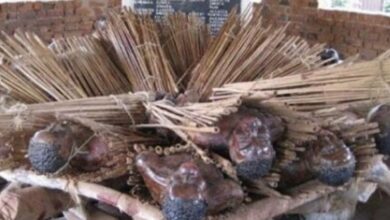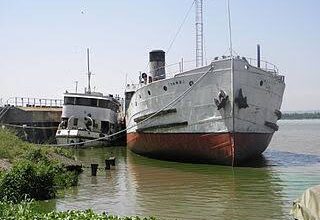Kinship relations among the Bagungu people
The below statement fits well in Bugungu are different clans lived together in certain residential areas, and as already said even immigrants found it easy to fit in.

Bugungu: Bagungu are one of the Indigenous peoples found in the Albertine Region of Uganda in the present day Buliisa District and are traditionally fishermen, cattle keepers, agriculturalists and hunters.
Bagungu are one of the least researched on ethnic groups in Uganda, having been recognised as a distinct ethnic group in 1995. This research is aimed at contributing to the knowledge pool about Bagungu and to trigger other scholars and academicians to undertake research on different aspects of their life.
Kinship is the foundation of this community since it provides both social and economic security to her members. Kinship originates from blood and marriages among this group.
Kinship and the different aspects of Gungu life
They speak Lugungu language and are socially organised on clan basis; there are 54 clans among the Bagungu (Kiiza, unpublished manuscript). Some clans became too big and formed sub-clans but this did not mean loss of the kinship or loss of the same ancestry from their colleagues. The key aspect in Bagungu kinship relations is sharing of the ancestry; however, marriages also forged the kinship (matrilineal/affinal ties).
Kinship among the Bagungu like in many African societies was the main source of socio-economic security as meals were shared and the community security was everyone’s responsibility. CCFU (2009) vividly captured the importance of kinship in an African setting they stated, I sleep in a house built by my sons…I stay with my grandchildren…my brother-in-law is suffering from asthma but it is his children who help him. This shows that, in a community, there is a place for everyone, regardless of his/her social or economic standing.
Drawing from my own experience, my grandmother who is a widow is supported by her children, grandchildren and great grandchildren.
This is why Bagungu valued birth as it was a guarantee that in old age, your children or their children will give you social security (basic needs of life). Proverbs like wamu akubyalirambe (your relative’s child is yours) ensured that, impotent and barren people were also sure that they will be provided for by the community.
The social security that our ancestors were assured of in the past has diminished, many children are no longer supporting their relatives, including their biological parents. Many of them are living luxurious lifestyles in urban areas, while their parents are living like destitute in their ancestral rural homes.
Recently, a woman died and her death was attributed to starvation, her daughter lived next to her but without giving her food. In the past among the Bagungu, elders used to bless and curse their children. Because of the fear of being cursed and the desire to get blessings, children cared for their parents for any parent who died while grumbling, and came back to haunt the living as a ghost.
The inter-clan marriage brings kinship relationship among two clans as in-laws. Despite the fact that Bagungu considers distant relatives as kinsmen, the closest relative is that of the same mother. When children share only the mother but with different fathers, their relationship is more precise than that with whom they share only the father. Bagungu will call the person whom they are not sure of the kinship, mwijwanga, kinsman, without explaining the relationship but they will be specific when the relationship is clear.
Lukumu Fred, the Buliisa District Chairperson is fond of saying that all Bagungu are related either knowingly or unknowingly. The wideness of African kinship has been captured well by Mbiiti (1971) “Kinship system is like a vast network stretching literally in every direction, to embrace everybody in any given local group. This means that each individual is a brother in-law, uncle, or aunt or something else, and there are many kinship terms to express the precise kind of kinship pertaining between two individuals. When two strangers meet a village, one of the first duties is sort out how they may be related to each other according to the accepted behaviour set down by the society”
The children of the daughters of the family, beewa were treated with respect as they had powers to discipline wives of their maternal uncles. In case a woman was mean over food, they had powers to enter in the house and eat whatever they found there. This privilege did not come without responsibilities, during funerals they were responsible for slaughtering animals, for collecting firewood which they use to lit fire in the compound to keep mourners warm during night veil.
In times of problems like funerals, the bereaved did not have issues with food as clan members contributed food, mbiko which fed the mourners. As soon as the death occurred, ladies were expected to visit their relatives with baskets to collect food and sauce. Neighbours also contributed food stuffs; this practice has been very active until early 2000s.With the commercialisation of life, the practice has died out, and the clan members have to cater for the mourners, with only in-laws contributing.
Some friends became closer to the family than even the relatives to the extent that they entrusted them with their sources of production. Some friends are more helpful than kinsmen when problems set in. Like, Mbiti has stated, when there existed no patrilineal or matrilineal relationships, Bagungu would say, twetwe bamwenya loosely translated we are the same people, Bagungu or as already stated above kinship was forged through friendship.
According to the website, www.everyculture.com the basis of kinship in Africa as elsewhere, is descent from the ancestor. The most widespread descent group is known as clan which can be either patrilineal or matrilineal. Needless to say, the Bagungu are organised on clan basis,
Kinship among this ethnic group was further sealed by communal life. Bagungu grazed their animals beyond their individual clan boundaries. Fishing and hunting are the other activities where non clan members worked together forming the kinship based on occupation. After work activities like bikwele, hunting festival, also brought together clans.
The communal worship system among this ethnic group also strengthened kinship at the ethnic level, the custodian of the sacred natural site Mulamansi, serving a certain geographical area regardless of the clans that lived there. For example, Baluukuula assisted by the Balimati were in-charge of the Karakaba site and other clans contributed sacrifices.
Bagungu have also welcomed the immigrants in the area and lived with them harmoniously, creating affinal kinship in the long term. Charsley (1970) drawing his experience from the research he undertook in Kimina village in Kigumba wrote as below;
In terms of social relations, leaving one village and moving into another is generally no more difficult. Neighbours in Bunyoro need to depend on one another in only the weakest of senses, and what dependency there is does not rest on any specific, particularistic type of relationship. What is important and valued in Bunyoro is rather, a diffuse and universal neighbourliness, a general helpfulness and mutual interest based on nothing more than residential proximity.
The above statement fits well in Bugungu are different clans lived together in certain residential areas, and as already said even immigrants found it easy to fit in. People who are ignorant of such historical facts, have with the discovery of oil and gas claimed the land occupied by their neighbours is theirs, for it was given to them by their ancestors.
Another class of ignorant is those who have claimed that those who are products of inter-ethnic marriages are not Bagungu regardless of which ethnicity the paternal parent is.
To ensure that no inbreeding occurs, Bagungu condemned incestuous marriages. However, someone was allowed to marry from or get married to the clan of his/her maternal grandmothers. This did not signify the loss, but strengthening of the kinship.
In the recent past, there has been an attempt to bring back the social cohesion brought by the loss of kinsmen failing to know each other. Many clans are organising a get -together party for their clansmen to get to know each other. In the past, this was solved by a spiritual event, kudya kibila , where all clan members attended. Urbanisation and moving away from rural areas by the elites has made it hard for such functions.
The powers of the clan head have eroded over the years as cultural institutions including clan headship no longer have administrative powers, they cannot punish their clansmen without fear of being reported to government authority.
The list below shows different kinship relations among the Bagungu both distant and close ones.
Naming relatives in Bugungu
Lugungu
English
01
Bbaabba
Father
02
Maama
Mother
03
Mpaa
Paternal aunt
04
Ngwete
Maternal uncle
05
Ziiza
Grandmother
06
Haaha
Grandfather
09
Mugeni
Father-in-law
10
Mubyala
Mother-in-law
11
Mwa mwiju wa Bbaabba
Cousin (paternal)
12
Mwa mwiju wa Maama
Cousin (maternal)
13
Mwiju wa Bbaabba
Paternal uncle
14
Mwiju wa Maama
Maternal aunt
15
Isyala
Brother-in-law
16
Muramu
Brother to your husband or Sister to your wife
17
Mwizu wange
Sister-in-law (Sister to your husband)
18
Mwa Nyakeetu
Niece/Nephew
19
Mwa Weetu
Nephew/Niece
20
Mubyeru
A parent
21
Weetu / Beetu
Brother(s)
22
Nyakeetu / Banyakeetu
Sister(s)
23
Baana beetu
Siblings
24
Itaa
Older brother/sister
25
Mwihange
Co-wife
26
Mwiju wange
Relative
27
Musaaha
Male to male friendship
28
Mwirange
Female to female friend
29
Mwana
A child
30
Mwizukulu
Grand child
31
Mwihwa
The child of daughter of the family
32
Mwama
Siblings of the same mother, may be of different fathers
33
Mwabba
Siblings of the same father, may be of different mother
34
Twetwe bamwenya
We are one people; implying same ethnicity.
35
Wamanenwa
Your son/daughter’s father-in-law/mother — in — law
References
1. Kanu. Ikechukwu Anthony (2014), International Journal of Humanities Social Sciences and education, Volume 1, Issue 9, September 2014.
2. Kuruhiira Godfrey Metuseera Ajuna Akiiki, 2014, Tribute to Bugungu; land of the Bagungu St. Joseph’s Printery, Kitovu-Masaka.
3. The Cross-Cultural Foundation of Uganda, 2009, Culture and social protection for the very poor in Uganda.
4. Ntontogoli gya Lugungu, 2012, SIL International
5. S.R. Charsley, 1970, mobility and village composition in Bunyoro, The Uganda Journal, Part 1, 1970, volume 34, The Uganda Society, Kampala.
The author is Kiiza Wilson, the founder of Bugungu Heritage and Information Centre.
Do you have a story about your community or an opinion to share with us? Email us at theugreports@gmail.com.






